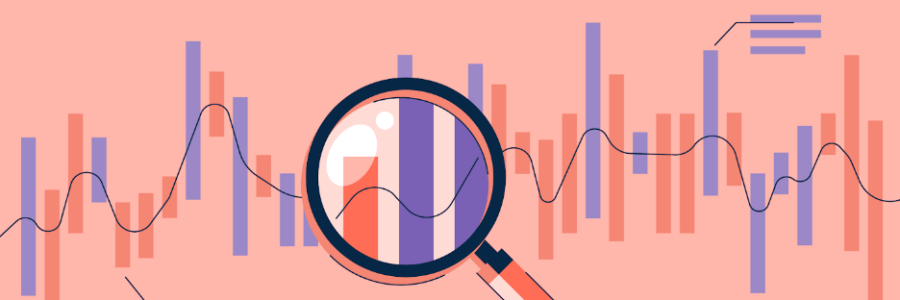
Technical and Fundamental Analysis – a profitable combination?
Trading in financial markets can be a complex and challenging endeavor. Traders need to analyze various data points to make informed decisions about when to enter or exit a trade. One way to approach this task is to apply statistics to trading.
Statistics is the branch of mathematics that deals with the collection, analysis, and interpretation of data. In trading, statistics can be used to analyze market trends, identify trading opportunities, and manage risk. Here are some ways to apply statistics to trading:
Technical Analysis:
Technical analysis involves using charts and technical indicators to analyze market trends and identify trading opportunities. Technical indicators such as moving averages, Relative Strength Index (RSI), and Bollinger Bands can provide statistical insights into the market. These indicators can help traders identify overbought and oversold conditions, trend reversals, and support and resistance levels.
Fundamental Analysis:
Fundamental analysis involves analyzing economic and financial data to understand the underlying factors that drive the market. Traders can use statistical tools to analyze economic indicators such as gross domestic product (GDP), inflation, and employment data. This information can be used to identify the direction of the market and make informed trading decisions.
Combining Technical and Fundamental Analysis:
Traders can combine technical and fundamental analysis to get a more complete picture of the market. By analyzing both technical indicators and economic data, traders can identify trading opportunities with a higher probability of success. For example, if technical analysis indicates an oversold condition in a particular stock, traders can use fundamental analysis to check if the company’s financials are strong, and the stock is likely to bounce back.
Combining technical and fundamental analysis can help traders make more informed trading decisions by providing a more comprehensive view of the market. Here are some ways to effectively combine these two approaches:
- Identify the long-term trend using fundamental analysis: Fundamental analysis can help traders identify the long-term trend of a market or a particular asset. This can be done by analyzing economic indicators, industry trends, and company financials. By understanding the underlying factors that drive the market, traders can make more informed decisions about the long-term prospects of an asset.
- Use technical analysis to identify short-term trading opportunities: Technical analysis can help traders identify short-term trading opportunities within the context of the long-term trend identified by fundamental analysis. Technical indicators such as moving averages, RSI, and Bollinger Bands can help identify entry and exit points for trades. For example, if the fundamental analysis indicates that a stock is undervalued, technical analysis can be used to identify the best time to enter the trade.
- Analyze volume: Volume is a key metric that can be used to confirm trends identified by technical and fundamental analysis. High volume can indicate the strength of a trend, while low volume can indicate a lack of interest or momentum. By analyzing volume, traders can gain additional insight into the market and confirm their analysis.
- Consider news events: News events such as earnings reports, political developments, and economic data releases can have a significant impact on the market. Traders should consider the impact of news events on their trading strategies and adjust their positions accordingly. For example, if a company reports better-than-expected earnings, traders may want to increase their position in the stock.
- Evaluate risk: Risk management is crucial when combining technical and fundamental analysis. Traders should use statistical analysis to evaluate risk metrics such as maximum drawdown and VaR. They should also set stop-loss orders to limit potential losses.
Risk Management:
Risk management is a crucial part of trading. Statistics can help traders manage risk by calculating various risk metrics such as the maximum drawdown, standard deviation, and value at risk (VaR). By calculating these metrics, traders can get an idea of the potential risk associated with a particular trade.
In conclusion, applying statistics to trading can provide traders with valuable insights into the market. Technical analysis, fundamental analysis, and risk management can all be enhanced by statistical analysis. By combining these tools, traders can make informed trading decisions and manage risk effectively. However, it is essential to remember that trading involves a high degree of risk, and traders should always practice sound risk management techniques.